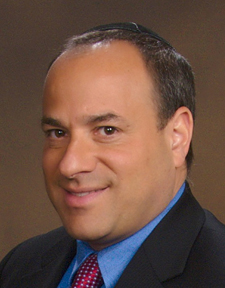by Jeff Stier, senior fellow, National Center for Public Policy Research
 The Consumer Product Safety Commission (CPSC) wants to hear from you.
The Consumer Product Safety Commission (CPSC) wants to hear from you.
The agency has extended its comments period until April 15 as it considers a rule that would regulate a range of chemicals within a group called phthalates. These chemicals, among other purposes, keep plastics from shattering when bent, and play a useful role in a range of consumer products.
Some phthalates, such as di(2-ethylhexyl) phthalate (DEHP), have already been banned. Others have been under scrutiny for years and have been subject to temporary bans, or have been banned from products that children are likely to put their mouths on.
The CPSC’s proposed rule would extend the ban on diisononyl phthalate (DINP)—in effect since 2009–from a temporary restriction on mouthable children’s toys and childcare articles, to a permanent ban on even non-mouthable children’s products. The CPSC’s justification is that non-mouthable products are touched, which can also cause exposure, thus adding to the cumulative exposure from other phthalates, such as DEHP.
But as it turns out, DINP is among the least potent phthalates, and exposure from toys and childcare articles—even mouthable ones—is a very minor source of DINP exposure in the first place. It is an even more minor concern in terms of cumulative phthalate risk, given DINP’s low potency.
Cumulative exposure from DINP in children’s products may have been a conceivable concern when overall phthalate exposure was much higher, prior to the legislative bans on many phthalates more than five years ago. But now, with overall exposure much lower, DINP exposure from touching should barely even be considered of minimal importance.
The CPSC, in its proposed rule to extend the ban, relies heavily on a study it commissioned called the Chronic Hazard Advisory Panel (CHAP) on Phthalates. Yet the CHAP report fails to take today’s lower exposure levels into account, instead relying on data that is not only old, but no longer relevant given the bans of more potent phthalates. A cumulative assessment based on exposure levels we know to no longer be accurate renders the CHAP report irrelevant when considering cumulative exposures.
The proposed CPSC rule comes close to acknowledging the scientific weakness of the case to extend the ban on DINP to non-mouthable products, by arguing that the effect of the ban would be minimal. “In practice, children’s toys and toys that can be placed in a child’s mouth all require testing for phthalates,” says the CPSC. “The testing costs are the same in either case. The only change caused by expanding the scope to all children’s toys is that toys too large to be mouthed could not be made with DINP.” (See pages 45 to 48 of the CPSC’s notice regarding the proposed rule.)
This, however, does not bother to consider several factors: The effect on consumers; the potential that in the future, smaller manufacturers would be burdened by this regulation; or the potential for eventual uses of DINP in non-mouthable children’s products. Overall, the rule offers no demonstrated public health benefits in exchange for keeping a safe and useful chemical out of the hands of consumers.
When Congress passed the Consumer Product Safety Improvement Act in 2008, it did not give the CPSC the power to remove safe products from the marketplace, simply because the effects of such a ban appear to be minimal. Nor did it empower the CPSC to remove products that can only be shown to present a risk based on old exposure data that is no longer accurate.
But with the extension of the comments period until mid-April, there is still time to let your voice be heard. The law is clear: The agency must read and consider your comments. Your unique insight and experience can help shape this policy. Submit your comments at the Federal eRulemaking Portal until April 15.
Jeff Stier is a senior fellow at the National Center for Public Policy Research in Washington, D.C., and heads its Risk Analysis Division. He is a frequent guest on CNBC, and has addressed health policy on CNN, Fox News Channel, MSNBC, as well as network newscasts. Stier’s National Center op-eds have been published in top outlets including The Los Angeles Times, Newsday, and Forbes, and he has also testified at FDA scientific meetings, met with members of Congress about science policy, and has submitted testimony to state government legislative hearings. Views expressed in this column are solely those of the author and do not necessarily reflect the views of The Toy Book as a whole. We hope that you will share your comments and feedback below. Until next time!

